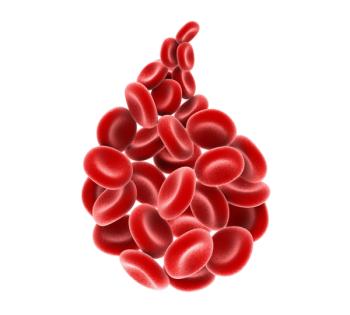
Given the heterogeneous nature of breast cancer, biomarkers evaluated throughout treatment help provide a clearer picture of the treatment paradigm.


Given the heterogeneous nature of breast cancer, biomarkers evaluated throughout treatment help provide a clearer picture of the treatment paradigm.

Patients with atopic dermatitis were associated with significant economic burden primarily driven by outpatient visits and pharmacy use, which increased with disease severity.

Unvaccinated older adults are 49 times more likely to be hospitalized after contracting COVID-19; nursing homes are experiencing a major staffing crisis; major Alzheimer groups plan to meet with federal officials and lawmakers to protest the CMS drug proposal.

Coverage of our peer-reviewed research and news reporting in the health care and mainstream press.

For the first time, a major study showed that remission for peanut allergy can be achieved even in very young children using oral immunotherapy.

The frequency of several mutations that inhibit response to tyrosine kinase inhibitors and tend to lead to increased disease severity was elevated in Chinese patients with non-small cell lung cancer.

On this episode of Managed Care Cast, we interview the lead author of a paper in the Health IT issue of The American Journal of Managed Care.

These new study findings support a link between faster walking pace and reduced risk of developing heart failure and its subtypes.

Implementing evidence-based guidelines (EBGs) resulted in a 17.3% reduction in anaphylaxis-related hospitalizations among children.

Patients with severe chronic rhinosinusitis with nasal polyps achieved significant improvements in health-related quality of life (HRQOL) and general health status with dupilumab treatment after 52 weeks.

Research presented at the 2021 American Society of Hematology Annual Meeting and Exposition highlights efforts in screening for multiple myeloma (MM).

The Biden administration will distribute 400 million nonsurgical N95 masks; a study aims to develop a questionnaire to enable gay and bisexual men to donate blood; counterfeit versions of Gilead HIV treatments were discovered in 9 states.

Patients with psoriatic disease and dermatologists reported their preferred strategies to improve cardiovascular disease risk management, with a specialist-led model of care touted by both groups.

With no existing respiratory syncytial virus (RSV) vaccine yet, researchers found that a vaccine comparable with the influenza vaccine could prevent tens of thousands of hospitalizations and deaths per year.

This new short-term matched study from investigators at Children’s Hospital of Philadelphia investigated cardiac-related outcomes among pediatric patients presenting with COVID-19–related multisystem inflammatory syndrome.

An abstract presented at the 63rd American Society of Hematology (ASH) Annual Meeting and Exposition assessed real-world data on patients with multiple myeloma to provide insight into longitudinal testing patterns and rates of sustained minimal residual disease (MRD) negativity.

Israeli study finds the added antibody protection from a fourth COVID-19 vaccine dose is not enough to prevent Omicron infection; Texas abortion law remains in effect after appeals court ruling; insurer spending for the unproven COVID-19 drug ivermectin was estimated at $2.5 million for a week last summer.

An abstract presented at the 63rd American Society of Hematology Meeting & Exposition found that the regimen was effective and that MRD could potentially be used as a biomarker to inform treatment duration.

Medicare Advantage plans must leverage data-driven insights and omnichannel telepharmacy software to guide meaningful interactions with high-risk members and boost Star Ratings performance.

Outside of survival motor neuron (SMN) treatment, there are several alternatives used in cases where SMN approaches are not appropriate for treating spinal muscular atrophy (SMA).

Compared with the European Union, biosimilar use in the United States lags, and the US government, health systems, and medical associations all have a role to play.

The combined effects of obesity and malnutrition among individuals with heart failure were explored in this recent study from France, with the investigators noting that while malnutrition is a risk factor for adverse outcomes, obesity often confers a protective effect.

An increase in the use of comprehensive genomic profiling among patients with advanced non–small cell lung cancer (NSCLC) was associated with additional life-years gained and a low-cost budget impact.

Coverage of our peer-reviewed research and news reporting in the health care and mainstream press.

In this review, comparable positive outcomes were seen among persons living with HIV vs not living with HIV who underwent kidney or liver transplant.

259 Prospect Plains Rd, Bldg H
Cranbury, NJ 08512
© 2025 MJH Life Sciences®
All rights reserved.
